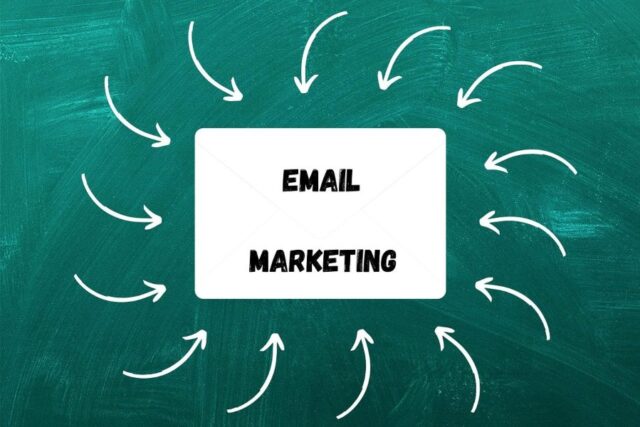Few people are aware that email predates the internet.
In 1971, the email’s creator sent the first email ever. It took the internet twelve years to change everything. Searching for the newest email marketing trends has developed into a distinct field in the nearly 50 years since that time. The way we currently view email, particularly email marketing, will alter in the upcoming years.
In the past few years, emails have become more subscriber-centric, and 2021 is investigating how even more customization can get past a stricter “junk” filter.
This indicates that a two-pronged strategy will become increasingly prominent in email marketing in the future:
- The first is to produce emails of a higher caliber to convey their message,
- and the second is to find a means to make emails more interactive and individual.
In today’s piece, we’ve chosen 7 of the most promising trends in email marketing — so let’s take a look at what they are set to change.
1. Hyper-Personalization In Emails
Personalized emails are already a thing of the past — only hyper-personalized campaigns have a chance of success in the future.
In fact, 71% of subscribers already base their decision to interact with an email on its level of customization.
That said, you must stop using your prospect’s first name in subject lines. Instead, consider employing hyper-personalization tactics for more customized experiences.
For instance, you can segment your audience based interactions with your brand. These could be prior purchases or certain behavior patterns you could target with specific calls-to-action.
Based on this segmentation, you can come up with highly customized messages to each group of the clients. Presumably, this will likely improve your customers’ loyalty and level of engagement more than just using their name in the subject line.
2. Increased Reliance On Dark Mode
The dark mode is not just a fad — it represents the future of email marketing. In fact, nearly 34% of email opens were done so in dark mode as of August 2022 — which is a 6% compared to the previous year.
As such, the dark mode is definitely becoming more popular — and that’s no surprise, as it has so many advantages to offer.
First off, the dark mode is perfect for low-light environments, as it emits less “blue light” that may interfere with sleep. As brands are becoming more ecological, it makes perfect sense to cater to your audience’s needs — and take care of their health, too.
Apart from obvious usability perks — such as using less energy or extending battery life — using dark mode has significant health benefits, too. That said, incorporating the dark mode into your email marketing plan is a smart choice if you want to stay current and meet the needs of your audience.
3. New Key Performance Indicators (KPIs)
It’s no news that marketer’s performance metrics evolve as quickly as this industry does. This explains why the most reliable email performance metric used for many years was open rate — but today it’s not as reliable any more.
This is partially due to Apple’s recent privacy enhancements, such as Mail Privacy Protection (MPP), which make it difficult for marketers to collect precise open rate statistics. No longer are marketers able to observe the email recipient’s device, location, or time of opening. MPP also makes it difficult to tell if an email was actually opened or merely briefly shown.
Since open rate has no obvious successor, the KPIs you choose will probably depend on the kind of campaign you’re conducting. The analytics that come when someone actually opens an email, such as click-through rate (CTR), conversion, and other engagement metrics, are fantastic places to start.
4. Increased Use Of Robotics And AI
This trend is rather obvious. The use of artificial intelligence is obviously going to become one of the drivers of email campaigns.
Many manual operations can be reduced and optimized thanks to the use of AI — from cleaning up email lists to organizing it or suggesting subject line ideas based on historical data. The more creative you get, the more ways to use AI for your email marketing you can possibly come up with.
Thanks to automation, you can set up various types of campaigns — from thank-you emails to transactional triggered emails ought to be sent as soon as the purchase is made. And the use of dynamic templates makes it even easier to create highly customized, informative emails that are already pre-filled with certain information based on their purpose — be it a cart abandonment, rare site visit, or any other issue.
5. Growth Of User-Generated Content
In 2023, user-generated content is expected to bloom, as 83% of customers already trust user reviews more than advertisements — and that’s for a good reason.
People today are intelligent, thus they can easily spot any fake reviews or exaggerated claims made by some brands. At the same time, they can identify real feedback from existing customers — and trust it immediately.
As the term suggests, UGC content is any form of content that is generated for brands by their loyal customers. There are multiple ways to create UGC content — from photos to reviews, articles, case studies, and more. Encourage your customers to create such content in exchange for special deals or gifts — and you’ll see how this content boosts your existing campaigns.
6. More Dynamic Content In Emails
You must offer a perk because it takes a lot to get someone to open your email. You may significantly enhance click through rates by using interactive elements in your emails, such as rollover picture effects, CTA buttons, surveys, and mini-games. Marketers who used interactive emails reported a 10% increase in conversion.
The extra benefit of some interactive elements, like surveys, is that they add to your consumer database. Knowing what consumers like and dislike can help shape future product roadmaps as well as new marketing initiatives.
To determine which interactive elements perform best, try conducting split testing. The increase in engagement is worth the extra time and effort, even though it can take some trial to observe a change in CTR.
7. Increased Use Of Emails For Requesting Feedback
Effective email marketing depends on developing solid client relationships. And relationship building has always been about understanding your audience’s needs — and doing your best to meet them in full.
That said, in 2023 and beyond you should increasingly use email as a form of communication with your client. Thank customers for their purchases, request their feedback, and remind just how valued they are by celebrating their special occasions and anniversaries.
To boost engagement and consumer satisfaction, try sending these emails together with a special discount, early access to a product, or special offer — and you’ll see the results.
The Primary Email Marketing Obstacle For 2024 And Beyond
The future of email marketing is both challenging and bright. To overcome key challenges, one core trait is needed — it’s flexibility.
This explains why 95% of B2C and B2B CEOs believe that their customers are changing quicker than they can change their organizations. Consumers share this opinion, with two-thirds saying that businesses are not reacting quickly enough to their changing requirements.
The twist is that every obstacle also presents a chance. In 2024 and beyond businesses that are able to adjust swiftly and successfully will win the competition and their clients’ hearts..
Wrapping Up
So, what final verdict should we come up with then? Email marketing trends are already changing the way marketers approach their campaigns — especially hyper-personalization, dark-mode-friendly emails, user-generated content, and many others.
For businesses to stay successful, they should experiment as much as possible by implementing these trends and measuring the results. After all, marketing is about endless experiments — and the case with email marketing is no exception.














